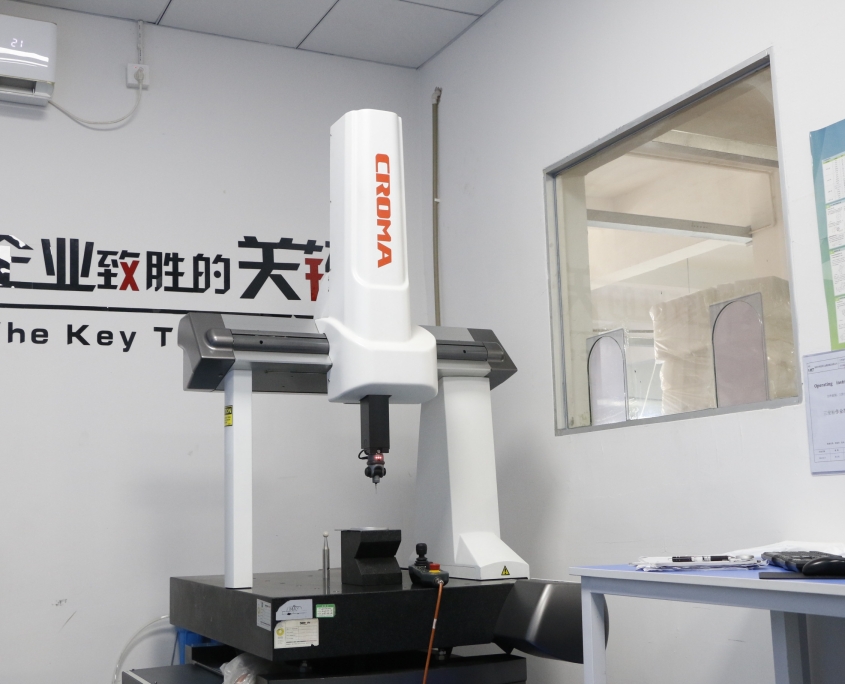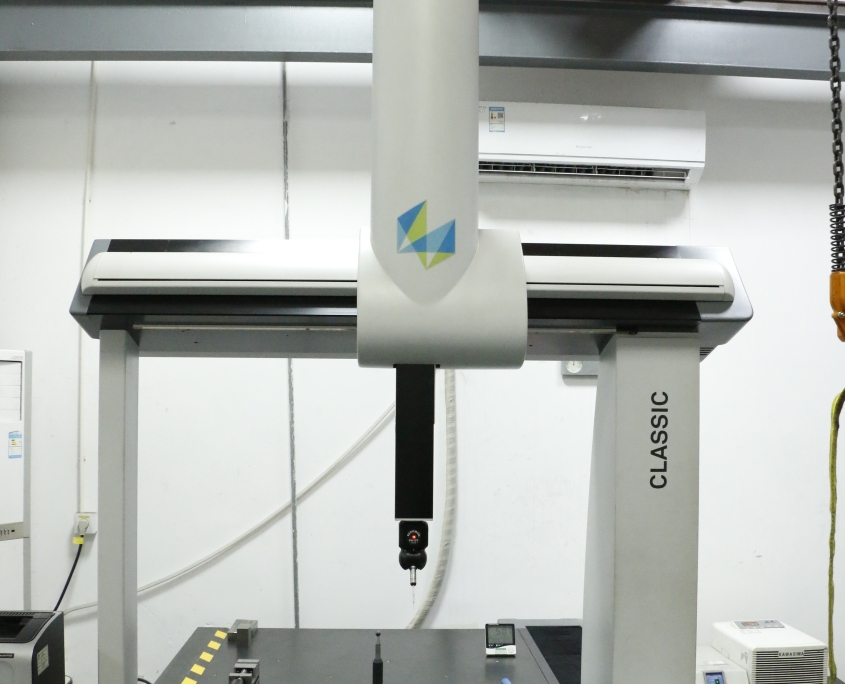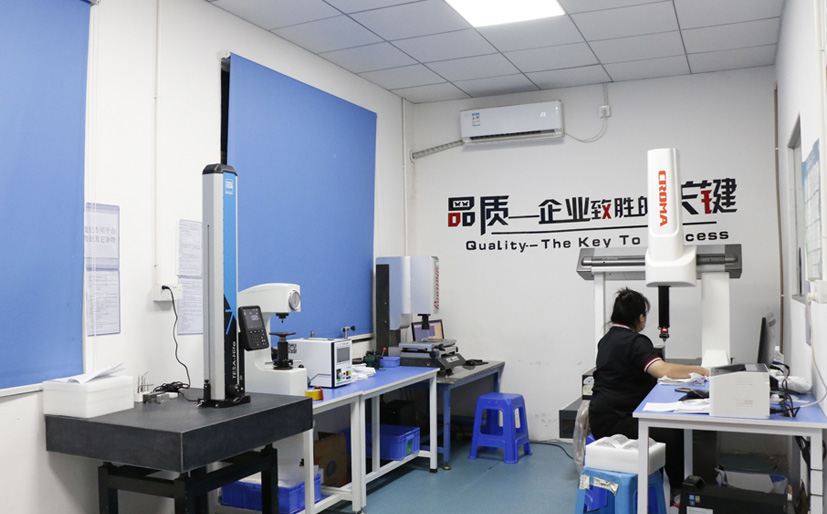What Is CMM Machine: A Complete Guide
Struggling with inaccuracies in your manufacturing processes? Poor measurement data can lead to faulty parts, product recalls, and costly delays. A Coordinate Measuring Machine can ensure high-precision measurements for better quality control.
By using a CMM, companies can reduce errors, improve quality control, and enhance overall production efficiency. Now that you know how important precise measurements are, let’s dive into what a CMM machine is and why it’s crucial to your business’s success.
What Is a CMM Machine?
A CMM, or Coordinate Measuring Machine, is a device used in industrial settings to measure the physical geometrical characteristics of an object. These machines operate by sensing discrete points on a part’s surface with a probe, which can either be mechanical, optical, or laser-based. The data collected from the probe is then used to compare the measured dimensions to the part’s intended design. CMM machines ensure that manufacturing parts meet exact specifications and tolerances, helping prevent defects and ensuring a higher quality product.

Why Do I Need a CMM Machine?
In the manufacturing industry, ensuring product accuracy is critical. CMM machines play a key role in maintaining tight tolerances in the production process. They can provide detailed measurement data to minimize the risk of part errors, effectively avoiding problems such as material waste or product recalls. In addition, CMM machines can optimize quality control processes, reduce errors in the production process, and help your processed products meet industry-specified standards.
How to Use a CMM Measuring Machine?
A coordinate measuring machine is a precision tool used to measure the geometry of physical objects. Proper use of a CMM involves maintaining optimal environmental conditions, preparing the machine and workpiece, calibrating the setup, and analyzing the measurement data. Here are the steps to ensure accurate and reliable measurements.
1. Environmental Conditions
The accuracy of the coordinate measuring machine is greatly affected by the ambient temperature. The temperature needs to be controlled at 20±2°C and the humidity needs to be kept at 40%~60% to reduce errors, prevent corrosion and electrostatic interference, and ensure the stability and reliability of the measurement results.
2. Machine Settings
Before measuring, use a fixture to stabilize the workpiece, clean the workbench, and ensure that the environment is clean and interference-free. Power on in sequence, including turning on the air compressor, UPS, control cabinet power supply and measuring machine drive, and starting the computer at the same time.
3. Calibration and Settings
Calibrate the probe, establish a workpiece coordinate system that matches the drawing, and set a safety plane to prevent collision.
4. Measurement Process
Select the measuring element according to the needs, set the safety parameters and temperature compensation, start the program for automatic measurement, and pay close attention to the data and equipment status.
5. Data Analysis and Output
Use professional software to process the measurement data, calculate the geometric quantity, compare the design drawings, and output the results such as data tables and graphics to support quality control and product improvement.
How CMM Works?
A CMM works by using a probe to touch the surface of the object being measured, recording the precise XYZ coordinates. This data is then used to create a three-dimensional model of the part. The machine interprets this data using a control system and compares it with the design blueprint, allowing the user to determine if the part meets the required tolerances. These machines can also automate the measurement process, which significantly improves speed and accuracy.
CMM Machine Components.
A CMM machine is composed of several key components, each playing a crucial role in ensuring precise and accurate measurements:
Probe: This is the component that directly contacts the object for measurement. It senses the surface of the part and collects data on its geometric features. The probe can be mechanical, optical, or laser-based, depending on the specific requirements of the measurement task.
Measuring Table: The measuring table provides a stable surface where the part is placed during the measurement process. It ensures that the part is held securely and in the correct position for accurate measurement.
Control System: The control system is the brain of the CMM machine. It interprets the data collected by the probe and manages the movements of the machine to ensure that the measurements are taken correctly. The control system also coordinates the operation of the probe and the measuring table to ensure smooth and efficient measurement.
Software: The software component of the CMM machine analyzes the measurement data collected by the probe and produces detailed reports. The software can compare the measured dimensions of the part to its design specifications, identify any deviations, and provide valuable insights for quality control and process improvement.
How is CMM Calculated?
CMM calculation involves determining the exact coordinates of various points on a part’s surface. The machine uses these coordinates to form a 3D map of the part. This data is then compared to the original CAD model to verify the dimensions and shape of the component. The calculations also include the geometry of the part, such as distances between points, angles, and diameters.
Why Are We Talking About CMM Speed All the Time?
CMM speed refers to how quickly the machine can gather accurate measurements. Speed is essential because it directly impacts production time and efficiency. Faster CMM machines can measure more parts in less time, making them invaluable in high-production environments. However, speed must be balanced with accuracy to ensure that measurements remain precise without compromising quality.

Advantages & Disadvantages of Coordinate Measuring Machines
CMMs are widely used for precision measurement in various industries. While they offer significant benefits, they also come with certain limitations. Below is a detailed comparison of their advantages and disadvantages.
| Category | Details |
|---|---|
| Advantages | |
| High Precision | Achieves micron-level precision, making it ideal for measuring small and complex parts, including dimensions, shapes, positions, and angles with exceptional accuracy. |
| High Efficiency | Automates the measurement process, reducing the need for manual intervention, allowing for fast task completion and batch processing to improve production efficiency. |
| Non-Contact Measurement | Utilizes optical, laser, and electromagnetic principles, ensuring the workpiece remains intact and its measurement remains accurate. |
| Data Output | Outputs detailed data and parameters to a computer for easy analysis and visualization, aiding in quality control and design verification. |
| Disadvantages | |
| High Cost | Requires significant investment for purchase and maintenance, which may not be feasible for small businesses or projects with limited budgets. |
| Limited Range | May struggle with oversized or uniquely shaped workpieces, often requiring customized equipment or alternative measurement methods. |
| Environmental Sensitivity | Performance can be affected by factors like temperature, humidity, and vibration, necessitating strict environmental controls to maintain accuracy and stability. |
In Conclusion
Coordinate measuring machines play a vital role in the manufacturing process. They not only ensure that parts are manufactured according to extremely precise specifications, thereby ensuring product accuracy, quality and overall production efficiency, but also help to continuously optimize and improve the manufacturing process through high-precision measurement data feedback.

Choosing VMT means choosing trust and high quality. We are committed to bringing you an impeccable product experience. We are equipped with advanced 3D measuring instruments and 2D projectors and other high-precision testing equipment to provide accurate quality inspection for each product to ensure excellent quality. Through the strict monitoring of SQE, VMT’s yield rate is as high as 98%, which guarantees the quality and reliability of the product from the source. Are you looking for a high-quality CNC processing manufacturer to work with? Contact VMT today!
Frequently Asked Questions About CMM Machine
What Does a CMM Machine Do?
A CMM machine measures the geometry of an object by sensing points on its surface with a probe. It provides highly accurate data on the dimensions and tolerances of the part, ensuring it meets the specified design requirements.
What are The 4 types of CMM?
There are four main types of CMMs:
Bridge CMM: The most common type, ideal for medium to large parts.
Cantilever CMM: Suitable for smaller parts with open sides for easy access.
Gantry CMM: Used for measuring large and heavy parts.
Horizontal Arm CMM: Often used for larger or more complex parts, allowing for easier access to the component.
What are the Basics of CMM?
The basics of a CMM include its ability to measure the physical properties of an object using a probe. The machine operates in three axes (X, Y, Z) to capture the precise dimensions and geometry of the part. CMMs are crucial in industries where precision is non-negotiable, like aerospace and automotive manufacturing.



